Description
Reproduction in lost wax cast bronze. Base in white marble.
Measurements: Height: 64 cm. Width: 22 cm. Depth: 20 cm.
Reproduction of the Renaissance sculpture of David by Donatello (around 1440).
At the beginning of the quattrocento, Donatello discovered the heroic representation of adolescence, which would later be exalted by the humanists, in the sense of a new awareness of the dignity and excellence of man. In his artistic maturity, Donatello’s activity was innovative and experimental, when he produced the David. In these works he sought the pictorial effects of the bronze material, with the possibility allowed by its patinas.
Donatello interpreted this biblical theme as a classical nude. In fact, it was the first full-length, round nude to appear in Renaissance sculpture. It is a natural nude, but very expressive due to the firmness of the general compositional lines.
It tells the story of David’s victory over Goliath, a Philistine giant. Donatello shows a naked, adolescent David with his foot on Goliath’s head, which he has just cut off with his enemy’s own sword and which David still holds in his right hand. With his other hand he holds the stone with which he struck Goliath. His expression is serene and his head is covered with a typical Tuscan straw hat from which the locks of his hair fall; he also wears a crown of amaranth leaves, a clear allusion to Greek heroism, and his feet are shod with boots. On Goliath’s head is a detailed helmet with historiated reliefs and vegetal decorations typical of the early Renaissance (known as ‘in candelieri’), and a bas-relief of a winged chariot is depicted.




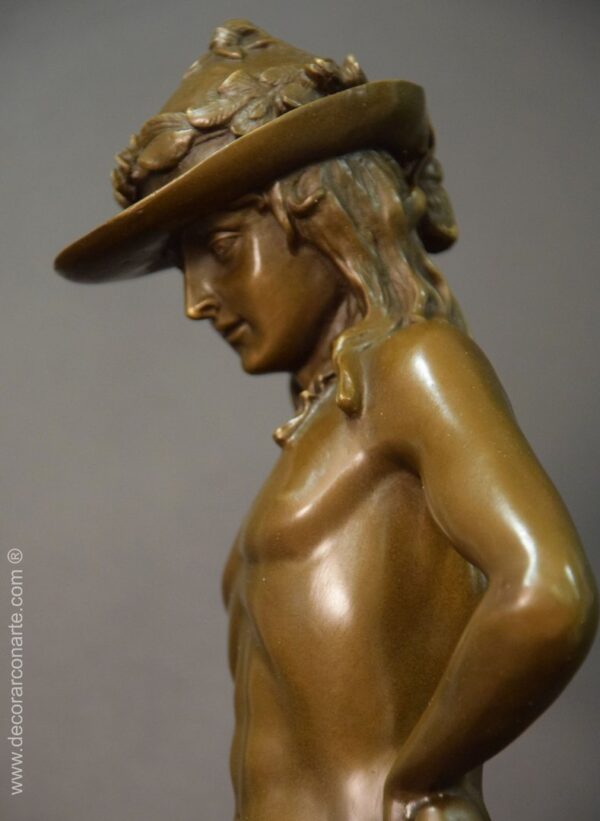
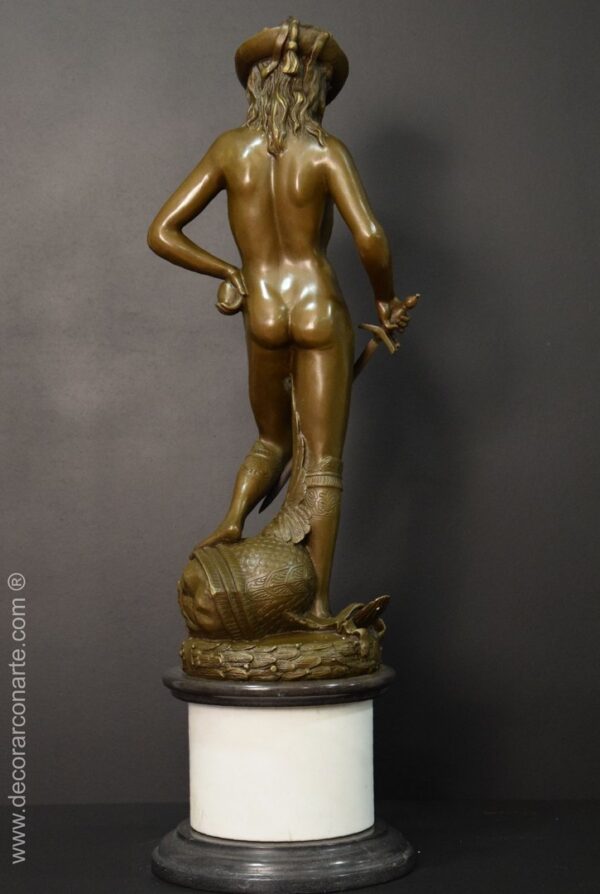
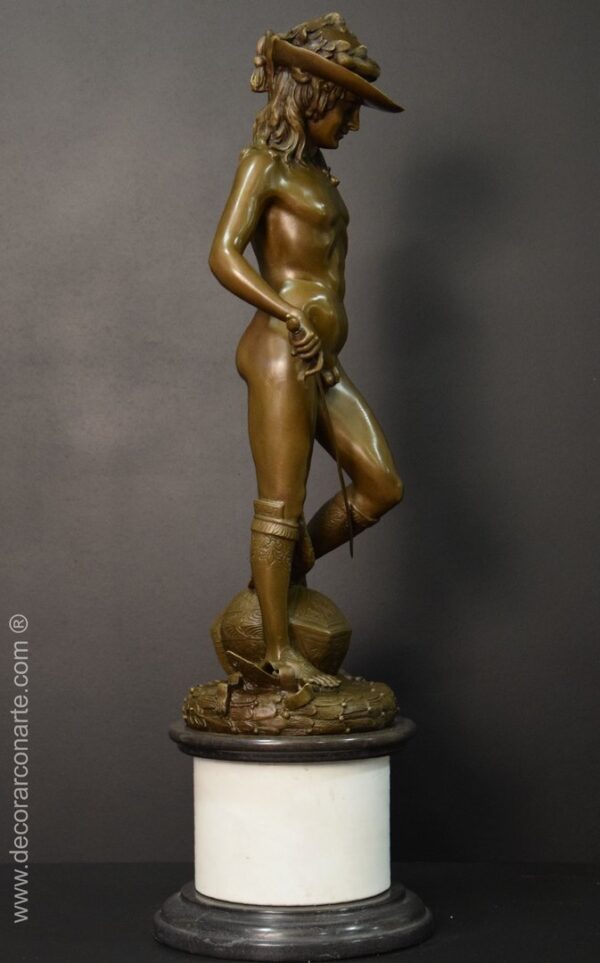


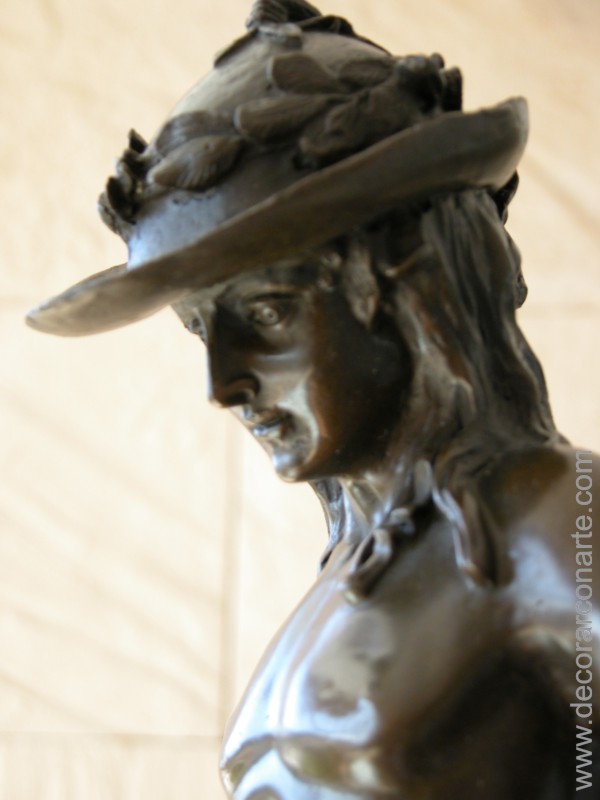
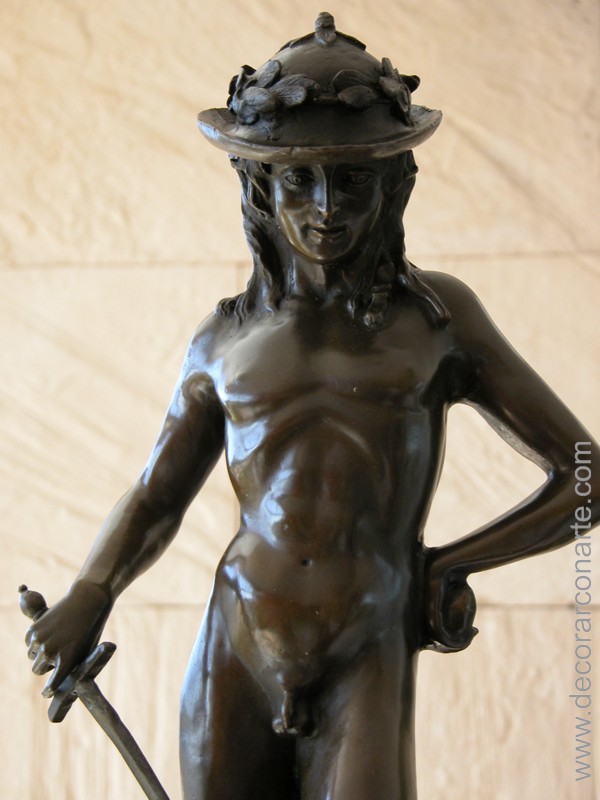
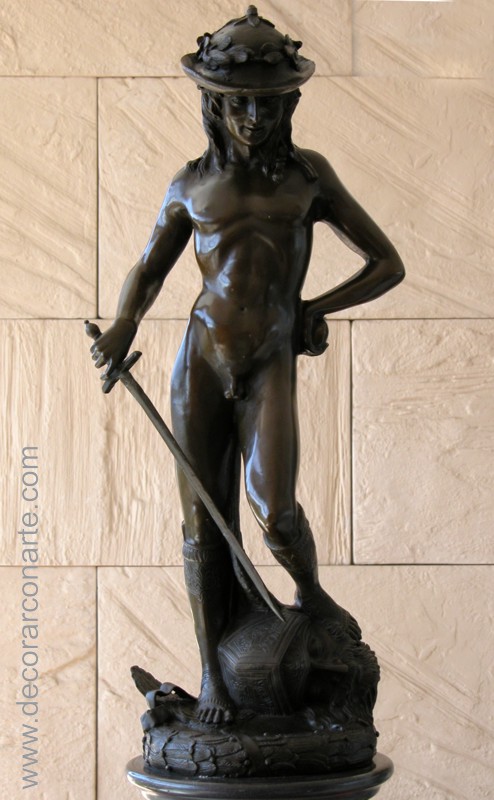






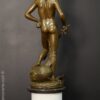
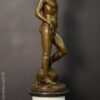





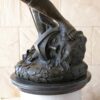







Reviews
There are no reviews yet.